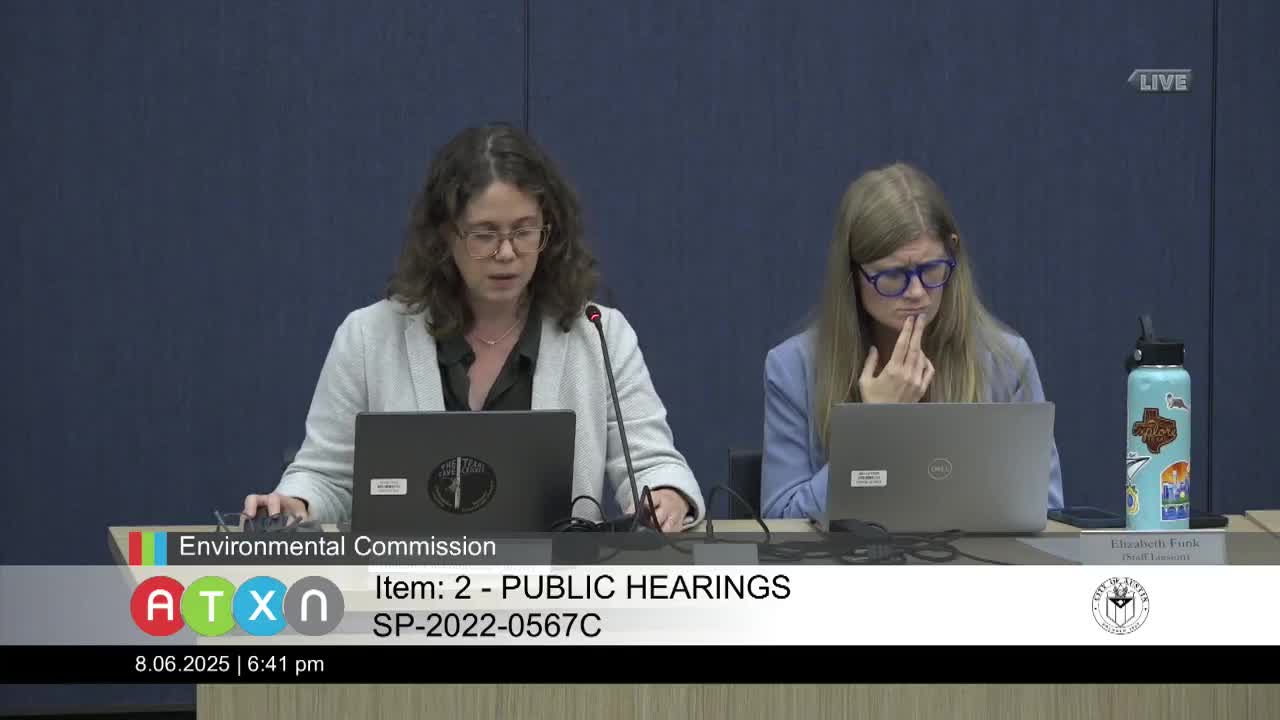City Officials Address Water Quality Concerns Over Proposed Artificial Turf Project
August 06, 2025 | Austin, Travis County, Texas
This article was created by AI summarizing key points discussed. AI makes mistakes, so for full details and context, please refer to the video of the full meeting. Please report any errors so we can fix them. Report an error »

Concerns over water quality and public health dominated discussions at the recent Austin Environmental Commission meeting, particularly regarding the use of artificial turf in local projects. Commission members raised alarms about the potential hazards associated with artificial turf, which is known to contain toxic metals and chemicals, including lead, zinc, and PFAs—substances linked to serious health risks.
Mike McDougall from the Development Services Department acknowledged that artificial turf is classified as impervious cover under city codes, similar to parking lots and buildings. However, he emphasized that while standard water quality measures would be implemented, current stormwater control systems are not designed to filter out PFAs, raising significant concerns about the leaching of these "forever chemicals" into local waterways.
The discussion highlighted a broader issue: the city’s regulations may not adequately reflect the latest scientific understanding of the environmental and health impacts of artificial turf. Commission members expressed worries that the existing codes do not account for the potential dangers posed by these materials, particularly in areas close to sensitive ecosystems like creeks.
In response to these concerns, representatives from the applicant organization indicated they are exploring alternatives that may reduce the risks associated with artificial turf. They mentioned the possibility of using PFAS-free materials and different types of infill that could lessen environmental impact. However, skepticism remained regarding the availability of safe and cost-effective options.
The meeting underscored the need for ongoing dialogue about the implications of artificial turf on public health and environmental quality. As the city moves forward with development plans, stakeholders are urged to consider the long-term effects of their choices on the community and the environment. The commission's discussions signal a critical moment for Austin as it navigates the balance between development and sustainability.
Mike McDougall from the Development Services Department acknowledged that artificial turf is classified as impervious cover under city codes, similar to parking lots and buildings. However, he emphasized that while standard water quality measures would be implemented, current stormwater control systems are not designed to filter out PFAs, raising significant concerns about the leaching of these "forever chemicals" into local waterways.
The discussion highlighted a broader issue: the city’s regulations may not adequately reflect the latest scientific understanding of the environmental and health impacts of artificial turf. Commission members expressed worries that the existing codes do not account for the potential dangers posed by these materials, particularly in areas close to sensitive ecosystems like creeks.
In response to these concerns, representatives from the applicant organization indicated they are exploring alternatives that may reduce the risks associated with artificial turf. They mentioned the possibility of using PFAS-free materials and different types of infill that could lessen environmental impact. However, skepticism remained regarding the availability of safe and cost-effective options.
The meeting underscored the need for ongoing dialogue about the implications of artificial turf on public health and environmental quality. As the city moves forward with development plans, stakeholders are urged to consider the long-term effects of their choices on the community and the environment. The commission's discussions signal a critical moment for Austin as it navigates the balance between development and sustainability.
View full meeting
This article is based on a recent meeting—watch the full video and explore the complete transcript for deeper insights into the discussion.
View full meeting
